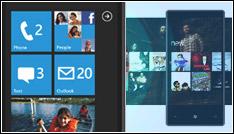Microsoft Windows Phone Share Slips Again

There is no sign of any recovery yet for Microsoft in Q3 smartphone market share stats from Nielsen
The scale of the challenge facing Microsoft in the mobile space has once again been starkly revealed after new data from Nielsen revealed that Redmond owned just 7.3 percent of the US smartphone market in the third quarter.
The research firm includes both Windows Phone and the older, largely discontinued Windows Mobile in its tally. The 7.3 percent number trails RIM/BlackBerry at 17.8 percent, Apple’s iPhone at 28.3 percent, and Google Android at 42.8 percent.
Interestingly, the accompanying graph breaks Microsoft’s share into two separate columns, “Windows Mobile/WP7” and “Windows Phone,” with further breakdowns by manufacturer; presumably, that division is due to Nielsen’s reporting methods.
Declining Share
Earlier this year, the firm placed Microsoft’s share of the market at 9 percent, trailing Android at 39 percent, Apple’s iPhone at 28 percent, and Research In Motion’s BlackBerry at 20 percent. Microsoft routinely refuses to release any hard data relating to smartphone sales, leaving it up to third parties like Nielsen to offer their own numbers – and even then, the continuing presence of Windows Mobile clouds the ability to tally Windows Phone.
During a 11 July keynote speech at Microsoft’s Worldwide Partner Conference, CEO Steve Ballmer described Windows Phone’s market share as “very small,” while insisting that other metrics (such as consumer satisfaction) boded well for the platform overall.
That Windows Phone faces a hard slog in the face of substantial competition isn’t exactly a groundbreaking revelation. The bigger question is whether a host of next-generation devices, and deepened alliances with companies like Nokia and Samsung, will ease those difficulties and increase Windows Phone’s presence among consumers and businesses.
Analyst Doubt
However, some analysts remain doubtful about Microsoft’s prospects, particularly with regard to its high-profile Nokia partnership.
“With no breakthrough innovation, we believe Nokia’s new phones are unlikely to get traction in a highly concentrated high end,” James Faucette, an analyst at Pacific Crest Securities, wrote in a research note quoted by The New York Times 22 November.
With that in mind, he set Nokia Windows Phone sales for the quarter to 500,000 units, down from his previous projection of 2 million.
Nokia Impact
 Nokia’s latest Windows Phone devices, the Lumia 710 and 800, are both handsomely constructed. The Lumia 710 is priced as more of a midmarket phone, at the equivalent of $376 (£239), while the Lumia 800 targets the higher end at $584 (£371). That certainly makes them more expensive than many midrange Android devices on the market, although carrier subsidies and other incentives will presumably lower that buy-in cost.
Nokia’s latest Windows Phone devices, the Lumia 710 and 800, are both handsomely constructed. The Lumia 710 is priced as more of a midmarket phone, at the equivalent of $376 (£239), while the Lumia 800 targets the higher end at $584 (£371). That certainly makes them more expensive than many midrange Android devices on the market, although carrier subsidies and other incentives will presumably lower that buy-in cost.
That being said, there are also signs that Windows Phone is gaining traction. According to Appcelerator and research firm IDF, which surveyed 2,160 Appcelerator Titanium developers earlier in November, Windows Phone has eclipsed RIM’s BlackBerry OS as a subject of interest – making it the third mobile OS behind Apple’s iOS and Google Android.
“Microsoft is enjoying symbiotic success with Nokia, read the summary of that report. “When asked why developers are more interested in Windows Phone 7 now than a year ago, a plurality (48 percent) said it was the Microsoft/Nokia partnership.”
But most of all, Microsoft needs to demonstrate that its software – and phones by Nokia and other partners – can interest those it needs most: paying customers.